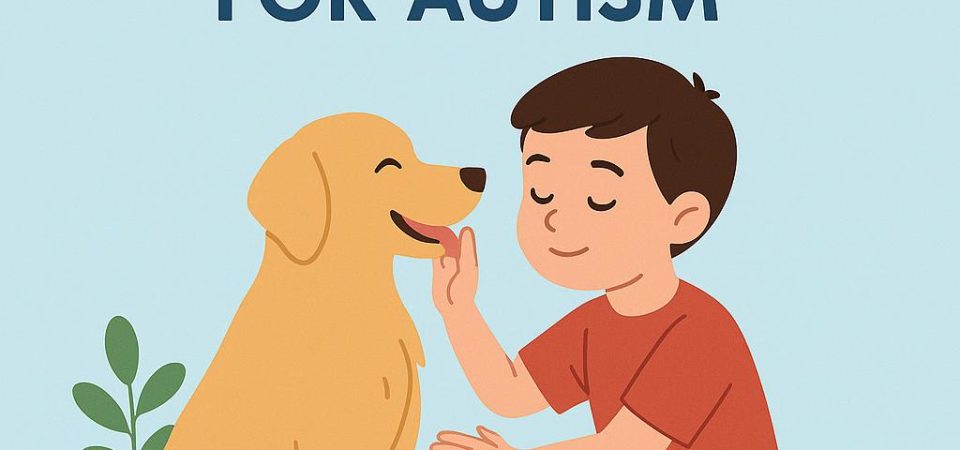Animal therapy, widely recognized as animal-assisted therapy (AAT), is steadily gaining attention and appreciation in the realm of complementary treatments for autism spectrum disorder (ASD). The multifaceted benefits linked with animal interactions have placed this therapeutic approach under the spotlight, especially with the accumulation of emergent research supporting its efficacy. The following discourse will delve deeper into the different dimensions of how animal therapy can aid individuals with autism, aligning with its credibility as a therapeutic ally.
Improvement in Communication Skills
One of the primary benefits associated with animal-assisted therapy is the enhancement of communication skills. For many individuals with ASD, articulating feelings or interpreting social signals can be profoundly challenging. However, the neutral and non-judgmental presence of animals can create a conducive environment for practicing verbal and non-verbal communication. For instance, children who interact regularly with therapy dogs often show an increased willingness to engage in verbal expression, as these animals offer a comforting presence free from societal judgment. Moreover, findings from prestigious research journals corroborate that routine interactions with therapy animals can significantly enhance language use and non-verbal communication, facilitating a smoother transition in expressing feelings and thoughts. Those seeking an even deeper understanding of these communication benefits can access a plethora of resources and research studies available online.
Reduction in Anxiety and Stress
A noteworthy impact of animal-assisted therapy is its potent ability to mitigate anxiety and induce relaxation among individuals diagnosed with autism. The interface between humans and animals can result in the release of oxytocin—a hormone famously dubbed the “love hormone”—which is pivotal in stress alleviation and establishing a sense of tranquility. Furthermore, interactions with animals such as petting a dog or grooming a horse can reduce cortisol levels, thereby alleviating the stress-induced physiological responses. The rhythmic nature of these actions not only calms the mind but also serves as a soothing activity that coincides with therapeutic goals. Comprehensive studies exploring the stress-alleviating facets of animal therapy are accessible for those seeking in-depth analysis and understanding.
Enhancement in Social Interactions
Animal therapy plays a pivotal role in fostering social interaction among individuals with autism. Animals frequently act as social conduits that foster connections between individuals and their environment. Through these interactions, individuals with autism can sharpen their social skills, such as maintaining eye contact, joint attention, and impulse regulation. As these skills are continually honed in the presence of therapy animals, they often transcend into human social interactions, gradually cultivating a healthier social ecosystem. This transformative process aids in bridging social gaps, ultimately resulting in a fortified social network for individuals with ASD. Additional resources and readings are available for those eager to explore the specific impacts of animal therapy on social skill enhancement and application.
Encouragement of Responsibility and Routine
Another tangible benefit of animal-assisted therapy lies in the promotion of responsibility and routine. Engaging in activities such as feeding, grooming, or walking animals inherently carry lessons in responsibility and time management. Patients who actively engage with therapy animals are tasked with adhering to a regimen that nurtures both consistency and independence. These structured interactions often have a ripple effect, positively influencing various life domains beyond therapy sessions. This element of animal assistance is particularly advantageous for younger individuals, who are at a prime stage to develop life skills of independence and accountability. A deeper dive into how animal therapy can instill these qualities can be undertaken with an array of educational guides and resources available to interested parties.
Conclusion
In summation, animal-assisted therapy represents a substantial complement in the treatment spectrum for autism spectrum disorder. By accentuating improvements in areas such as communication, anxiety reduction, social interactions, and promoting responsibility, animals emerge as pivotal therapeutic partners. Although ongoing research is essential to consolidate and expand the understanding of these benefits, prevailing evidence strongly advocates for the integration of animal therapy within a comprehensive and multifaceted autism treatment framework. Stakeholders—including affected individuals, caregivers, and healthcare professionals—are urged to explore and embrace animal therapy’s potential, maximizing its benefit-rich landscape to elevate therapeutic outcomes for those with autism. This approach not only reiterates the therapeutic roles of animals but also pioneers a more inclusive and holistic treatment narrative for ASD.
